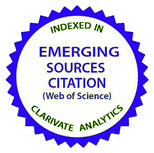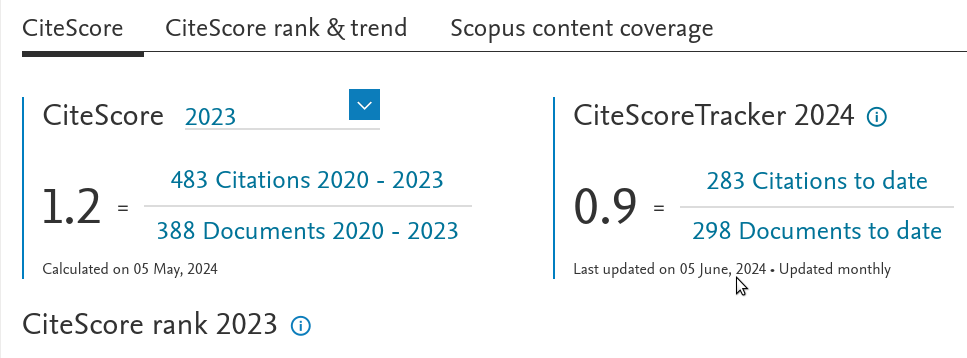Хартрi–фокiвська задача електронно-дiркової пари в квантовiй ямi GaN
DOI:
https://doi.org/10.15407/ujpe58.01.0056Ключові слова:
хартрi–фокiвська апроксимацiя, екситон, в’юрцитна квантова яма, кулонiвський ефект, лазериАнотація
Розглянуто мiкроскопiчне обчислення спектра поглинання для системи GaN=AlxGa1 xN квантової ями. Тодi як структури квантової ями з параболiчним законом дисперсiї проявляють звичайне висвiтлювання екситону без змiни спектральної областi, то значне червоне змiщення екситонного резонансу знайдено для в’юрцитної квантовоямної структури. Обчислено енергiю екситонного резонансу для в’юрцитної квантової ями. Одержанi результати можуть пояснюватися впливом валентної зонної структури на ефекти квантового конфайнменту. Обчислено оптичний спектр пiдсилення в хартрi–фокiвськiй апроксимацiї. Обчислено зоммерфельдiвське пiдсилення. Обчислено червоне змiщення спектра пiдсилення в хартрi–фокiвськiй апроксимацiї вiдносно хартрiвського спектра пiдсилення.
Посилання
<li> N. Savage, Nature Photonics 1, 83 (2007). <a href="https://doi.org/10.1038/nphoton.2006.95">https://doi.org/10.1038/nphoton.2006.95</a></li>
<li> A. Khan, K. Balakrishnan, and T. Katona, Nature Photonics 2, 77 (2008). <a href="https://doi.org/10.1038/nphoton.2007.293">https://doi.org/10.1038/nphoton.2007.293</a></li>
<li> H. Kawanishi, M. Senuma, and T. Nukui, Appl. Phys. Lett. 89, 041126 (2006). <a href="https://doi.org/10.1063/1.2236792">https://doi.org/10.1063/1.2236792</a></li>
<li> H. Kawanishi, M. Senuma, M. Yamamoto, E. Niikura, and T. Nukui, Appl. Phys. Lett. 89, 081121 (2006). <a href="https://doi.org/10.1063/1.2338543">https://doi.org/10.1063/1.2338543</a></li>
<li> J. Shakya, K. Knabe, K.H. Kim, J. Li, J. Y. Lin, and H. X. Jiang, Appl. Phys. Lett. 86, 091107 (2005). <a href="https://doi.org/10.1063/1.1875751">https://doi.org/10.1063/1.1875751</a></li>
<li> R.G. Banal, M. Funato, and Y. Kawakami, Phys. Rev. B. 79, 121308(R) (2009).</li>
<li> R.D. Meade, A.M. Rappe, K.D. Brommer, and J.D. Joannopoulos, J. Opt. Soc. Am. B 10, 328 (1993). <a href="https://doi.org/10.1364/JOSAB.10.000328">https://doi.org/10.1364/JOSAB.10.000328</a></li>
<li> S.H. Park, D. Ahn, and S.L. Chuang, IEEE J. Quantum Electron. 43, 1175 (2007). <a href="https://doi.org/10.1109/JQE.2007.905009">https://doi.org/10.1109/JQE.2007.905009</a></li>
<li> M.F. Schubert, J. Xu, J.K. Kim, E.F. Schubert, M.H. Kim, S. Yoon, S.M. Lee, C. Sone, T. Sakong, and Y. Park, Appl. Phys. Lett. 93, 041102 (2008). <a href="https://doi.org/10.1063/1.2963029">https://doi.org/10.1063/1.2963029</a></li>
<li> M.H. Kim, W. Lee, D. Zhu, M.F. Schubert, J.K. Kim, E.F. Schubert, and Y. Park, IEEE J. Sel. Top. Quantum Electron. 15, 1122 (2009). <a href="https://doi.org/10.1109/JSTQE.2009.2014395">https://doi.org/10.1109/JSTQE.2009.2014395</a></li>
<li> S.H. Park, D. Ahn, and J.W. Kim, Appl. Phys. Lett. 92, 171115 (2008). <a href="https://doi.org/10.1063/1.2920187">https://doi.org/10.1063/1.2920187</a></li>
<li> A.E. Romanov, T.J. Baker, S. Nakamura, J.S. Speck, and E.J.U. Group, J. Appl. Phys. 100, 023522 (2006). <a href="https://doi.org/10.1063/1.2218385">https://doi.org/10.1063/1.2218385</a></li>
<li> A.A. Yamaguchi, Appl. Phys. Lett. 94, 201104 (2009). <a href="https://doi.org/10.1063/1.3139080">https://doi.org/10.1063/1.3139080</a></li>
<li> H.H. Huang and Y.R.Wu, J. Appl. Phys. 106, 023106 (2009). <a href="https://doi.org/10.1063/1.3176964">https://doi.org/10.1063/1.3176964</a></li>
<li> M. Nido, Jpn. J. Appl. Phys., Part 2 34, L1513 (1995). <a href="https://doi.org/10.1143/JJAP.34.L1513">https://doi.org/10.1143/JJAP.34.L1513</a></li>
<li> S. Chichibu, T. Azuhata, T. Sota, H. Amano, and I. Akasaki, Appl. Phys. Lett. 70, 2085 (1997). <a href="https://doi.org/10.1063/1.118958">https://doi.org/10.1063/1.118958</a></li>
<li> D. Fu, R. Zhang, B. Wang, Z. Zhang, B. Liu, Z. Xie, X. Xiu, H. Lu, Y. Zheng, and G. Edwards, J. Appl. Phys. 106, 023714 (2009). <a href="https://doi.org/10.1063/1.3174436">https://doi.org/10.1063/1.3174436</a></li>
<li> P.Y. Dang and Y.R. Wu, J. Appl. Phys. 108, 083108 (2010). <a href="https://doi.org/10.1063/1.3498805">https://doi.org/10.1063/1.3498805</a></li>
<li> S. Fujita, T. Takagi, H. Tanaka, and S. Fujita, Phys. Status Solidi B 241, 599 (2004). <a href="https://doi.org/10.1002/pssb.200304153">https://doi.org/10.1002/pssb.200304153</a></li>
<li> W.J. Fan, J.B. Xia, P.A. Agus, S.T. Tan, S.F. Yu, and X.W. Sun, J. Appl. Phys. 99, 013702 (2006). <a href="https://doi.org/10.1063/1.2150266">https://doi.org/10.1063/1.2150266</a></li>
<li> S. Sasa, M. Ozaki, K. Koike, M. Yano, and M. Inoue, Appl. Phys. Lett 89, 053502 (2006). <a href="https://doi.org/10.1063/1.2261336">https://doi.org/10.1063/1.2261336</a></li>
<li> K. Koike, I. Nakashima, K. Hashimoto, S. Sasa, M. Inoue, and M. Yano, Appl. Phys. Lett 87, 112106 (2005). <a href="https://doi.org/10.1063/1.2045558">https://doi.org/10.1063/1.2045558</a></li>
<li> S.-H. Park and S.-L. Chuang, J. Appl. Phys. 72, 3103 (1998).</li>
<li> M. Willatzen, IEEE Trans. Ultrason. Ferroelectr. Freq. Control 48, 100 (2001). <a href="https://doi.org/10.1109/58.895916">https://doi.org/10.1109/58.895916</a></li>
<li> B.A. Auld, Acoustic Fields and Waves in Solids (Wiley, New York, 1973).</li>
<li> L. Duggen and M.Willatzen, Phys. Rev. B 82, 205303 (2010). <a href="https://doi.org/10.1103/PhysRevB.82.205303">https://doi.org/10.1103/PhysRevB.82.205303</a></li>
<li> M. Lindberg and S. W. Koch, Phys. Rev. B. 38, 3342 (1988). <a href="https://doi.org/10.1103/PhysRevB.38.3342">https://doi.org/10.1103/PhysRevB.38.3342</a></li>
<li> W.W. Chow, S.W. Koch, and M. Sargent III, Semiconductor Laser Physics (Springer, New York, 1994). <a href="https://doi.org/10.1007/978-3-642-61225-1">https://doi.org/10.1007/978-3-642-61225-1</a></li>
<li> W.W. Chow, M. Kira, and S.W. Koch, Phys. Rev. B. 60, 1947 (1999). <a href="https://doi.org/10.1103/PhysRevB.60.1947">https://doi.org/10.1103/PhysRevB.60.1947</a></li>
<li> W.W. Chow and M. Kneissl, J. Appl. Phys. 98, 114502 (2005). <a href="https://doi.org/10.1063/1.2128495">https://doi.org/10.1063/1.2128495</a></li>
<li> G.L. Bir and G.E. Pikus, Symmetry and Strain-Induced Effects in Semiconductors (Wiley, New York, 1974).</li>
<li> R.S. Knox, Theory of Excitons (New York, Academic Press, 1963).</li>
<li> L.O. Lokot, Ukr. J. Phys. 54, 963 (2009).</li>
<li> L.O. Lokot, Ukr. J. Phys. 57, 12 (2012).</li>
<li> M. Gell-Mann and K.A. Brueckner, Phys. Rev. 106, 364 (1956). <a href="https://doi.org/10.1103/PhysRev.106.364">https://doi.org/10.1103/PhysRev.106.364</a></li>
<li> C. Kittel, Quantum Theory of Solids (Wiley, New York, 1963).</li>
<li> S. Raimes, Many-Electron Theory (North-Holland, Amsterdam, 1972).</li>
<li> R.D. Mattuck, A Guide to Feynman Diagrams in The Many-Body Problem (McGraw-Hill, New York, 1967).</li>
<li> H. Haug and S. Schmitt-Rink, Prog. Quant. Electr. 9, 3 (1984). <a href="https://doi.org/10.1016/0079-6727(84)90026-0">https://doi.org/10.1016/0079-6727(84)90026-0</a>
</ol>
Downloads
Опубліковано
Як цитувати
Номер
Розділ
Ліцензія
Ліцензійний Договір
на використання Твору
м. Київ, Україна
Відповідальний автор та співавтори (надалі іменовані як Автор(и)) статті, яку він (вони) подають до Українського фізичного журналу, (надалі іменована як Твір) з одного боку та Інститут теоретичної фізики імені М.М. Боголюбова НАН України в особі директора (надалі – Видавець) з іншого боку уклали даний Договір про таке:
1. Предмет договору.
Автор(и) надає(ють) Видавцю безоплатно невиключні права на використання Твору (наукового, технічного або іншого характеру) на умовах, визначених цим Договором.
2. Способи використання Твору.
2.1. Автор(и) надає(ють) Видавцю право на використання Твору таким чином:
2.1.1. Використовувати Твір шляхом його видання в Українському фізичному журналі (далі – Видання) мовою оригіналу та в перекладі на англійську (погоджений Автором(ами) і Видавцем примірник Твору, прийнятого до друку, є невід’ємною частиною Ліцензійного договору).
2.1.2. Переробляти, адаптувати або іншим чином змінювати Твір за погодженням з Автором(ами).
2.1.3. Перекладати Твір у випадку, коли Твір викладений іншою мовою, ніж мова, якою передбачена публікація у Виданні.
2.2. Якщо Автор(и) виявить(лять) бажання використовувати Твір в інший спосіб, як то публікувати перекладену версію Твору (окрім випадку, зазначеного в п. 2.1.3 цього Договору); розміщувати повністю або частково в мережі Інтернет; публікувати Твір в інших, у тому числі іноземних, виданнях; включати Твір як складову частину інших збірників, антологій, енциклопедій тощо, то Автор(и) мають отримати на це письмовий дозвіл від Видавця.
3. Територія використання.
Автор(и) надає(ють) Видавцю право на використання Твору способами, зазначеними у п.п. 2.1.1–2.1.3 цього Договору, на території України, а також право на розповсюдження Твору як невід’ємної складової частини Видання на території України та інших країн шляхом передплати, продажу та безоплатної передачі третій стороні.
4. Строк, на який надаються права.
4.1. Договір є чинним з дати підписання та діє протягом усього часу функціонування Видання.
5. Застереження.
5.1. Автор(и) заявляє(ють), що:
– він/вона є автором (співавтором) Твору;
– авторські права на даний Твір не передані іншій стороні;
– даний Твір не був раніше опублікований і не буде опублікований у будь-якому іншому виданні до публікації його Видавцем (див. також п. 2.2);
– Автор(и) не порушив(ли) права інтелектуальної власності інших осіб. Якщо у Творі наведені матеріали інших осіб за виключенням випадків цитування в обсязі, виправданому науковим, інформаційним або критичним характером Твору, використання таких матеріалів здійснене Автором(ами) з дотриманням норм міжнародного законодавства і законодавства України.
6. Реквізити і підписи сторін.
Видавець: Інститут теоретичної фізики імені М.М. Боголюбова НАН України.
Адреса: м. Київ, вул. Метрологічна 14-б.
Автор: Електронний підпис від імені та за погодження всіх співавторів.

















